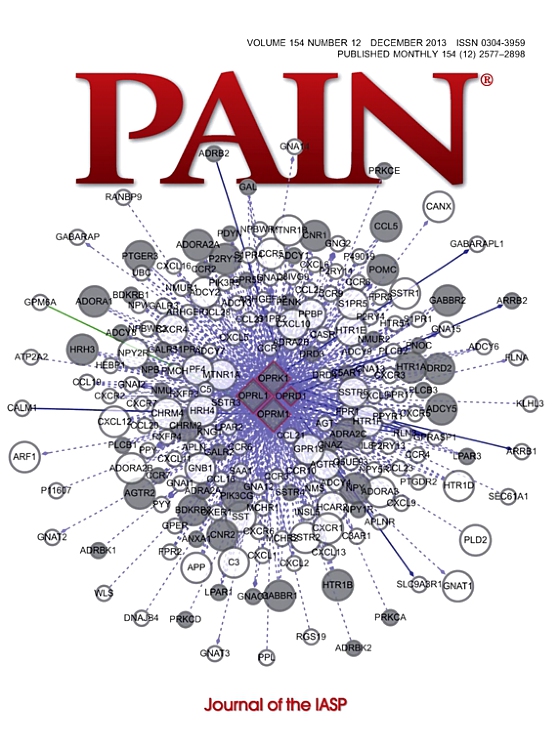Effects of acute stress exposure on pain sensitivity: the role of individual stress responsiveness and orientation to pain and stress.
IF 5.9
1区 医学
Q1 ANESTHESIOLOGY
引用次数: 0
Abstract
Acute stress exposure has been reported to result in stress-induced hypoalgesia (SI-hypo), hyperalgesia (SI-hyper), or no response (SI-NR). The inconsistency may stem from individual variability in acute stress response and/or individual orientation to stress and pain, factors not commonly examined. We aimed to identify patterns of SI-hypo and SI-hyper, their relation to stress responsiveness, and the moderating effects of stress and pain orientations. Healthy participants (n = 133) were exposed to acute stress via the Montreal Imaging Stress Task (MIST). Heat-pain threshold (HPT) was measured before and after the MIST. Changes in state anxiety pre-post MIST indicated stress responsiveness, and stress and pain orientations were evaluated via Global Perceived Stress (GPS) and Fear of Pain (FOP), respectively. Autonomic variables and salivary cortisol were examined for manipulation check. The MIST induced three pattens of effect on HPT: 27.8% of participants exhibited SI-hypo, 24.8% exhibited SI-hyper, and 47.4% SI-NR. Higher stress responsiveness was associated with greater HPT change. FOP and GPS significantly moderated the association between stress responsiveness and HPT change; the higher the stress response, the greater SI-hypo among individuals with low FOP and among individuals with high GPS. Furthermore, the higher the stress response, the greater SI-hyper among individuals with high FOP. Thus, individual variability in the effects of stress on pain sensitivity may be conditioned by stress responsiveness, and by stress and pain orientations. As increased distress can contribute to, and exacerbate, chronic pain, FOP and GPS may serve as treatment targets for the prevention and amelioration of chronic pain.急性应激暴露对疼痛敏感性的影响:个体对疼痛和应激的应激反应和取向的作用。
据报道,急性应激暴露可导致应激性痛觉减退(SI-hypo)、痛觉过敏(SI-hyper)或无反应(SI-NR)。这种不一致可能源于急性应激反应的个体差异和/或个体对应激和疼痛的倾向,这些因素通常不被研究。我们的目的是确定si -低和si -高的模式,它们与应激反应的关系,以及应激和疼痛取向的调节作用。健康参与者(n = 133)通过蒙特利尔成像应激任务(MIST)暴露于急性应激。测定热痛阈值(HPT)。焦虑状态的变化反映了应激反应,并分别通过全球感知应激(GPS)和疼痛恐惧(FOP)评估了应激和疼痛取向。采用自主神经变量和唾液皮质醇进行操作检查。MIST对HPT的影响有三种模式:27.8%的参与者表现为SI-hypo, 24.8%的参与者表现为SI-hyper, 47.4%的参与者表现为SI-NR。较高的应激反应与较大的HPT变化相关。FOP和GPS显著调节应激反应与HPT变化的关系;应激反应越高,低FOP个体和高GPS个体的SI-hypo越大。此外,高FOP个体的应激反应越高,SI-hyper越高。因此,应激对疼痛敏感性影响的个体差异可能受到应激反应以及应激和疼痛取向的制约。由于增加的痛苦可以促进和加剧慢性疼痛,FOP和GPS可以作为预防和改善慢性疼痛的治疗靶点。
本文章由计算机程序翻译,如有差异,请以英文原文为准。
求助全文
约1分钟内获得全文
求助全文
来源期刊

PAIN®
医学-临床神经学
CiteScore
12.50
自引率
8.10%
发文量
242
审稿时长
9 months
期刊介绍:
PAIN® is the official publication of the International Association for the Study of Pain and publishes original research on the nature,mechanisms and treatment of pain.PAIN® provides a forum for the dissemination of research in the basic and clinical sciences of multidisciplinary interest.
 求助内容:
求助内容: 应助结果提醒方式:
应助结果提醒方式:


